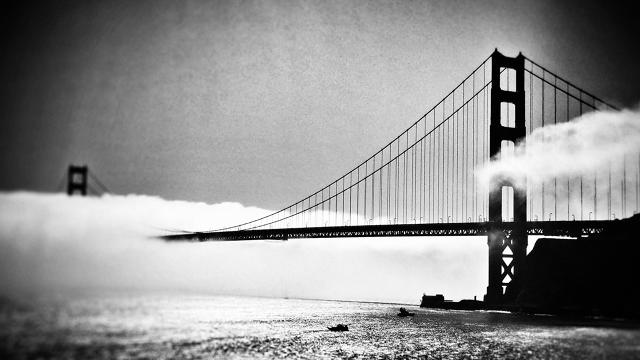5 LEADERSHIP LESSONS FROM CREATIVE DIRECTORS BEHIND AWARD-WINNING ADS
By John Patroulis
Originally Posted on Fast Co.Create.
BBH New York Creative Chairman John Patroulis offers up his most significant career lessons in creative leadership.
So I was having a conversation with a recently out-of-school creative person recently when she asked: “So, how do you creatively lead people?” Fair enough question. I mean, it’s the gig.
But unfortunately my answer went something like, “Well, you trust your gut and care and feel your way to knowing when to jump in or when to back off, when to get specific and when to help someone to find it themselves then express it in their own voice so they can do things you could never do because you’re not them and don’t have their beautifully unique view of the world . . . that’s how.”
Yes. I know. I believe creativity is too important to put into tidy boxes for everyone, and am usually reluctant to give advice about it because what works for me might not perfectly work for anyone else. But I also believe creativity is the ability to find connections and patterns where others don’t, and expressing those connections and patterns in a uniquely personal way. So maybe learning from several successful creative leaders, finding connections that resonate with you, and using them in your own personal way is a good way to learn how to do it.
So here’s a few things I learned along the way from some folks who have done just fine in the Creative Leadership game. There are more. But if you’re a young person wondering how to become a creative leader—how to not just creatively lead work and ideas but clients, people, agencies and companies—you could do worse than starting here. Because what makes for great creative direction of ideas can make for creative leadership in general.

SIMPLICITY
When I was first starting out, John Hunt came to the New York office of TBWA/Chiat/Day from South Africa. Great guy. Smart. And one thing you learned very quickly—”Simple” was the highest compliment he could give. I always kind of thought the holy grail of an idea for John would be one where absolutely nothing happened, and then a logo would emerge to make wonderful, intuitive sense of that absolute nothing. Well as things continue to get more and more fractured in how they reach and interact with an audience, having something brutally simple running through it all is essential if you want it to connect, and add up to anything. Complication is the tendency of the world, simplifying is the work of the creative. And that’s the connection—it’s the job of every creative leader to simplify problems. To boil things down to a single clear expression. From creative ideas to accounting to vision for the company, if it can’t be expressed simply, something’s probably not quite right. John insisted on it. He’s Global Creative Overlord of TBWA or some ungodly title at the moment so, you know, it worked for him.
THE IMPERATIVE RESPONSIBILITY OF BEING IRRESPONSIBLE
So also while I was still there, John brought in Gerry Graf to run the New York office. I was excited—this guy had made work that was hard not to love. Always funny. And always making a very clear and differentiating point. Well, on one of my first assignments after his arrival, I was working on about round 37, and my partner and I stumbled onto an idea. A ridiculous, extremely unsellable idea. The exact kind you fall in love with round about midnight on round 37.
Well, Gerry pops his head around wondering why we’re laughing and I told him we had an idea that was saying the right thing, but happened to involve vomit as it’s central premise. And that the client would of course hate it. That’s when I learned the next big lesson in creative leadership—clients, agencies, and people need you be a little unbound. And that being irresponsible, when tied to a clear thought and intention is actually the most responsible thing you can do. So instead of Gerry dismissing the idea, two days later I was presenting it to the client while Gerry smiled on. To be clear, we absolutely, without question, did not even come close to selling it. But we took a shot, no one got hurt, and three weeks later sold something just as surprising that propelled the client’s business and won awards along the way—neither of which would have happened without loosening things up with that meeting and opening the minds of everyone to what was possible. Agencies and companies alike need creative leaders to do and act and push for the things they know are right, even if to everyone else it feels crazy, or, yes, a little irresponsible. Ground it in the right reason, make the right point, and you might just come up with an idea that propels things the way completely responsible people never will.

THE POWER OF PRODUCTION
I moved to San Francisco and found myself working with the most awarded creative director around at the time, Chuck McBride. And if New York was all about the ideas and writing, this was West Coast. Less writey-writey, less logic, more about emotion and how things felt. So when presenting to Chuck, you had to be ready not only to defend an idea and how it was expressed—but to have a very clear picture of how it would come to life in reality. He forced everyone to see ideas in how we make them, not just the story or theory in our heads, and to use the making as part of the creative process. In some cases, as THE creative process.
We all live in the culture of making now, of moving quickly and creating more for less. All the more reason to know exactly what you want your idea, experience or expression to look, feel, sound and taste like before you start. And to see every step of the making process as another chance to make something better, staying alive to the creative opportunity in every challenge and roadblock along the way. Any creative director who is waiting for a production partner or developer to have that vision is only doing half their job. And any creative leader who doesn’t constantly ground their thinking in the reality of how it comes to life (the people/systems/money equation) is probably only doing half of theirs.

TRUST
So then Scott Duchon and I started an agency in San Francisco as creative partners. We had worked together before and were carrying lessons we had learned apart and together. But the most valuable lesson that came out of it for me was the importance and creative value of trust. It doesn’t often come easily for creative people because history teaches them that giving away trust often means giving away little—and sometimes fatal—pieces of your vision. But when you’re lucky enough to find people who you believe in, you learn giving that trust away only makes it better. The old one-plus-one equals way more than three routine.
The key here of course is the person you’re trusting. Scott and I (and our planning partner Mike Harris) started the place because we knew, trusted, and believed in each other. But creative leadership is as much about finding those people to surround yourself with (and giving some of your trust away believing it’ll only make things better) as anything.

OPTIMISM
John Hegarty was a big part of the reason I came to BBH. I hadn’t had a boss for a while, but figured if you’re going to HAVE a boss, John Hegarty might just be someone you could learn from. Well, I’ve learned many things from him, but I think the single most important thing was to always always always believe a great idea was just around the corner. That no problem or situation was too difficult that creativity couldn’t solve it.
I was asked to introduce John at his Hall of Fame induction, and of all the things I spoke about, the main thing I talked about was his optimism. He is probably the single most optimistic man I have ever been around. That optimism is infectious—and fundamental to any great creative pursuit. You have to believe something will come from nothing. FROM NOTHING! And you have to believe it every single day when the entire company is staring at you waiting for this brilliant idea you’re getting paid to come up with. You are basically making your living on that—on starting into the abyss believing at some point magic will happen. And if you don’t believe, it won’t. If you do, well, it still might not. But your odds are better. That’s true in creative direction of an idea, or leadership of a global company. John lives that as a creative leader. You could do worse.

RESILIENCE
So I did not have the great fun or advantage of seeing director Ed Wood in action. But in the biopic by Tim Burton, there’s a scene where Ed is on the phone, asking a producer what he thought of his last picture. We can’t hear the answer, but there is a pause where Ed’s face tells us that producer was wildly, scathingly, witheringly unimpressed. Ed registers the impact, takes a breath, twists up a grin and says, “Well—the next one will be much better!”
Resilience. Everyone fails. Wieden+Kennedy has their famous “Fail Harder” motto and they’re, you know, WIEDEN+KENNEDY. No matter what happens, you have to twist up a grin, and set your mind that this won’t stop you. Because if you keep doing that, nothing ever will. The next one will be much better!
As I said earlier, I don’t think there is a single guidebook to creative leadership, any more than there being a single way to a creative idea. But you can pick and choose and steal from folks you respect, then express it the only way you know how, and I bet you’ll be just fine.
John Patroulis is the creative chairman of BBH New York.
